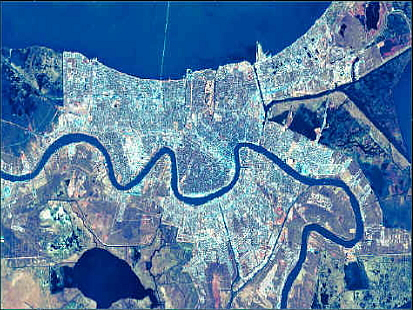 |
Can We Protect New Orleans?Team 4: Hurricane and Flood Protection |
|
Sources are cited by numbers. The numbers refer to categories in our References list. Levee Management - The Levee BoardThe current, ineffective levee board system
in We plan to consolidate the levee boards into one body in which the each district would be represented. The Levee Governance Board would be in charge of overseeing the rebuilding of the levees to and their maintenance at the specifications and standards we set up earlier. The members of the board would be appointed by the governor and it would include engineers of technical expertise. All the land currently held by the levee boards would be property of the state. The Levee Governance Board would be responsible for the safety and upkeep of the levee system and would have to report to the governor on it activities and budget. National Levee
Safety Program Act of 2006 is a bill in Congress that sets up standards and protocol for the
inspection and inventory of the levees, an interagency committee on
levee
safety with a National Levee Safety Advisory Board, and a National
levee safety
program. This is obviously a very important measure that would not only
help
ensure the safety of (12) Monitoring and MaintenanceThe levee system pre-Hurricane Katrina had been very poorly maintained. Because of subsidence many of the levees had sunk below where they were supposed to be, and the levee heights are extremely inconsistent from region to region. As mentioned above, the Levee Governance Board would be in charge of overseeing all levee maintenance. The Board would require a yearly inventory of the levee system. Any damage that is found would be fixed according to safety priority before the next hurricane season, or if on the river before the next high water. Subsidence would be taken into account every year by raising the levees to account for unacceptable sinkage. Part of ensuring the safety of the levees is
informing and
involving the community and making sure that they don’t get complacent.
One way
in which we plan to do this is by involving the local universities,
such as
Tulane and Lack of
knowledge
about the state of levees protecting To have a more systematic approach to levee
monitoring, we
are going to put electronic sensors in all the levees. Our plan
includes the
use of a Differential Global Positioning System that will monitor the
relative
positions of points along the levee system. The
DGPS system recommended by the United States Army
Corps of Engineers
for Levees and Groins has a horizontal movement tolerance of 1-2 ft.
and a
vertical tolerance of .5-1 ft. We
believe that this level of accuracy is not precise enough to protect A side benefit to the improved monitoring
and maintenance of
the One of the lessons learned after Hurricane Katrina was that proper maintenance and monitoring is imperative to public safety. We envision the monitoring system to be the first step in a levee maintenance program. The decision to use small tolerances in our system was made keeping in mind the various subsidence rates throughout the city. The fear is that some of the highest subsidence rates per year (6-10mm per year) are not larger than the tolerances of the USACE specified sensors. Therefore, there was the danger of waiting years before being able to conclusively verify problems. With the smaller tolerance engineers will be notified much sooner of issues. We suggest that after such notification, that the levees in question be surveyed and adjusted as needed. (12) USACE. (2003 Jul 1). Engineering Manual 1110-1-1003. Army CorpsInstead of involving the Army Corps, we have
decided to hire
private contractors to rebuild the (9)
|